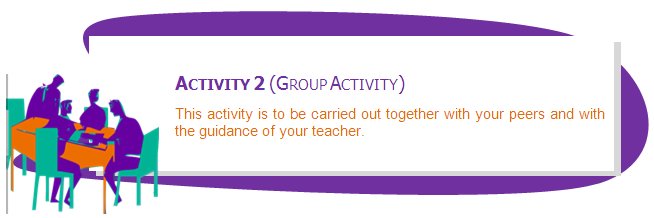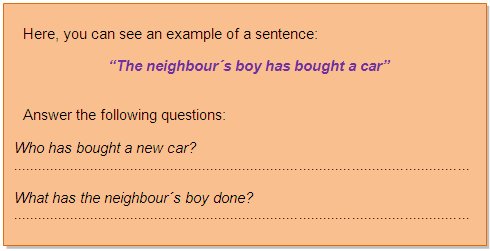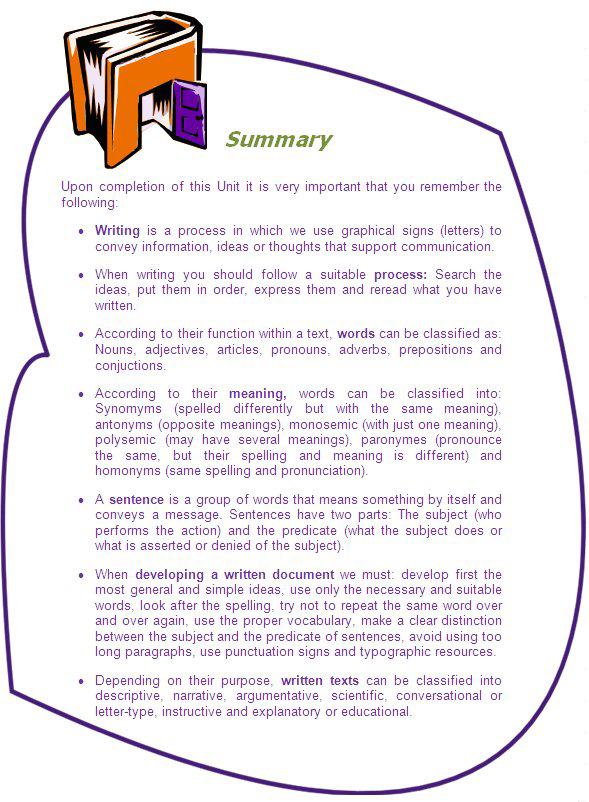Key Competencies Kit
for Facing Lifelong Learning


 |
This Project has been funded with support from the European Commission. This communication reflects the views only of the author, and the Commission can not be held responsible for any use which may be made of the information contained therein. |
 |
Upon completion of this Unit you shall be able to:
We are getting closer to the end of the Module “Communication in the Mother Tongue” and now we focus on developing the use of writing as a communication tool.
Written documents are used in many communicative process of our daily life. When we make a deal with someone, for example in a job relationship, we have a written document that states the conditions of such relationship. When we want to tell some news to a friend that is far away, we send him/her a letter or an email. When we are ill, the physician provides us with a written document indicating the drugs that we must take. When we do our shopping in a supermarket, the cashier gives us a ticket indicating the items that we have bought and the price paid for them, etc.
As you can see, there are many situations where the information that we share needs to be registered in a format that ensures that the information is preserved in time and space.
Likewise reading, writing is a task that may be easy. We all can write, but not all of us are able to use writing in a way that allows a clear and proper expression of our ideas, thoughts or available information.
In this Unit you will learn how to use writing properly, so that it supports the exchange of information and becomes an excellent resource to support communication.
Let’s start by reflecting upon the following questions:
Like in the case of reading, we can say that almost all people can write, in other words, almost all people are able to represent letters and combine them into words. However, Are we all able to use writing to convey information, ideas, thoughts, etc. properly?
Writing is a process in which we use graphical signs (letters) to convey information, ideas or thoughts that support communication. |
 |
Remember!The communicative processes of reading and writing are closely related. Good reading habits result in a good writing skill and vice versa. |


All students except one shall leave the classroom and wait for the teacher to make you enter the room one by one.
The student that stayed in the classroom must read a text that the teacher has given him/her during 30 seconds and shall have 1 minute to write it down, then he/she must give the text that he/she has written to the following student that enters the room, who must in turn read it during 30 seconds and write it down in another piece of paper. Then the second student must tell a third student to enter the room and must give him/her the text he has written…and so on.
When all the students are back in the classroom the first text (the one given by the teacher to the first student) is to be compared with the last one (the one written by the last student that entered the classroom).
 |
Is there any difference between the information contained in the first text and in the last text?. Justify your answer.
Which factors have affected the loss of information?
What information has been eventually kept?. With what matches this information?
|
Let´s go back to the example of the instructions that we have seen in the previous section. Now, indicate all the mistakes that you can identify:
What do you think is the reason for these mistakes?
The mistakes made in these instructions could be related with the translation of the text, as it was originally written in another language. However, these mistakes can also be related with the writing process followed by the author.
Think of any act of written communication that you carry out in your daily life, for example, leaving a note to remind a colleague of a task, sending a friend an SMS to congratulate him on his birthday, or presenting a claim to a shop clerk.
Before writing:
|
When you star to write:
|
During writing:
|
After writing:
|
 Most answers are 1. Congratulations! You are following an adequate process for writing. Verify this by confirming that the process that you follow corresponds to the suggested process below.
Most answers are 1. Congratulations! You are following an adequate process for writing. Verify this by confirming that the process that you follow corresponds to the suggested process below.
Most answers are 2. We are sorry! You must review your writing process and adapt it to the process suggested below.
You should follow a process that results in a clear and concise writing that supports the communicative process.
|
Let’s review the writing process that we have just described.
In previous Units you have learned how to identify and organize the key ideas of a text, so the two first steps of this process should not be difficult for you.
Let’s jump to the third stage. As you know, we use written words to communicate by means of writing. Let’s analyze this concept …

 |
Remember!Whenever your are doing something related with reading or writing, having a dictionary at hand shall be very helpful. In a dictionary you can look up the meaning and spelling of words. |
Now, we’ll see some of the key elements of written communication more into detail.
As you have seen in the first Units, the key element of verbal communication is the word.
Write a sentence summarizing what you have done in the summer:
……………………………………………………………………………………………....................
Analyze the words that you have used to build this sentence, are they all the same?
……………………………………………………………………………………………....................
As you probably know, in order to generate written texts we need to use different types of words. In the following activity you shall discover these different types of words.

I always say that the favorite brands of cars are Ford and Saab.
What is the Word used to name or designate something?
This word belongs to the category of names.
Which are the words that provide us with information about the name?
This word belongs to the category of adjectives.
Which Word that is used together with names specifies information related with the gender (feminine and masculine) and the number (singular or plural)?
This word belongs to the category of articles.
Which is the word that is replacing a name?
This word belongs to the category of pronouns.
Which word is referring to an action?
This Word belongs to the category of verbs.
Which word is complementing or adding information to the verb?
This word belongs to the category of adverbs.
Which Word allows bringing together or linking different words?
This word belongs to the category of prepositions.
Which word allows to bring together or link several words that are related (refer to the same thing)?
This word belongs to the category of conjunctions.
According to their function within a text, words can be classified into:
|
We must focus, not only in the functions of words, but also in their meaning.
Write two words that mean the same, but are mentioned differently.
Write two words that mean the opposite.
Write a word that has only one meaning.
Write a word that has several meanings.
Write two words that are pronounced the same but are spelled differently and have different meanings.
Write two words that are spelled the same but have different meanings.
As you know, when we put together a set of words we are building a sentence.
As you can see, according to the meaning we can also refer to different types of words:
|
As you probably know, a sentence starts with a capital letter and is closed with a period.
A sentence is a group of words that means something by itself and conveys a message. |

With this example you have verified tha sentences have two parts: the subject (who performs the action) and the predicate (what the subject does or what is asserted or denied of the subject). |
 |
Remember!When writing it is very important that we organize sentences properly and that all sentences show a clear distinction between subject and predicate. |
We have moved forward in analyzing written communication, but you have not yet had the opportunity to put your abilities into practice. For this reason, now you must write a text telling us what would be your ideal trip.
Before starting, we remind you that you should devote some minutes to think about what you are going to write and organize it.
My ideal trip would be...
My ideal trip was when I went to the Caribbean two years ago with my friends. We took of at seven o'clock and we landed at four o'clock so it was a long flight. We wanted to dive with dolphins so we did it. When we were diving we saw a shark, but it was harmless because it was so small. We were enjoying the trip and we were getting used to living there. We went to Jamaica and Puerto Rico on a cruise. The last day, we were on the beach from ten o'clock in the morning until eight o'clock in the evening. Nevertheless the following day we returned to Madrid.
Please, fill in the following questionnaire to assess the quality of the text that you have written:
QUALITY OF THE WRITTEN TEXT |
YES |
NO |
|
|
|
|
|
|
|
|
|
|
|
|
|
|
|
|
|
|
|
|
|
|
|
|
|
|
|
|
|
|
(Count the number of affirmative answers):
 Between 7 and 10: Congratulations!. You are a good writer; however you should check some of the following recommendations.
Between 7 and 10: Congratulations!. You are a good writer; however you should check some of the following recommendations.
Between 5 and 7: We are sorry, you need to improve!. No doubt that you can communicate with your writing ability, but you are not taking full advantage of your communicative potential. You really must pay attention to the following recommendations.
When developing written documents you must not forget the following:
|
If you remember, in Unit 4, we classified texts into literary and non-literary. Now, we are going to classify written texts according to the purpose of the writer.
In order to learn which are the types of written texts you must carry out the following tasks (don’t forget to put into practice the writing guidelines provided in the previous section):
Which path do you follow to get from your place to the nearest train station?
Write a joke that you think it´s funny:
What do you think of school violence?
Search in the Internet a research that explains what is an eclipse12 phenomenon and copy and paste here the first sentence:
Write a brief job application letter:
Copy and write a recipe that you know:
 |
Are all the texts that you have written the same?. Have you followed the same procedure?
Select one of the texts that you have just written. Explain the procedure that you have followed to write it.
|
According to the purpose of the write, written texts can be classified into:
|
 |
Remember!When writing, the first thing you must do is analyzing what is the purpose of the text, depending on the communicative purpose, you must select the most suitable type of text and follow the most suitable structure. |

Below you can see some examples of written texts.
The teacher shall randomly assign each of these examples to the students.
Each student must:
After developing the text, each student shall show his/her text to his/her peers, so that everyone reads everyone’s text. A blank sheet must be annexed to the written text for the peers to write down comments about aspects of the text that could be improved.
Afterwards, some time shall be devoted to discuss the written text, the writing method employed, the information gathered on each type of text, etc.

 |
Response to issues and activities outlined in the Didactic Unit 5 |
As you have realized, the characteristics of written communication are the following: timeless (a), demands concentration (c), uses letters (e), uses punctuation signs (f) and is reflective (h).
The right order, from the minimal unit to the maximal unit is as follows:
In the suggested sentence, the answers for the questions are the following: